Let’s make reducing, reusing, and recycling part of your family’s lifestyle.
Let’s make reducing, reusing, and recycling part of your family’s lifestyle.
This video explains what you can recycle in your curbside recycling bin in the San Bernardino County Desert and Mountain communities.
There are four main categories of items that can be recycled in most curbside recycling programs or dropped off at a local recycling facility: Paper, Glass, Metal and Plastic. It’s important to follow your town or county’s recycling rules, check with your hauler to make sure you’re recycling right.
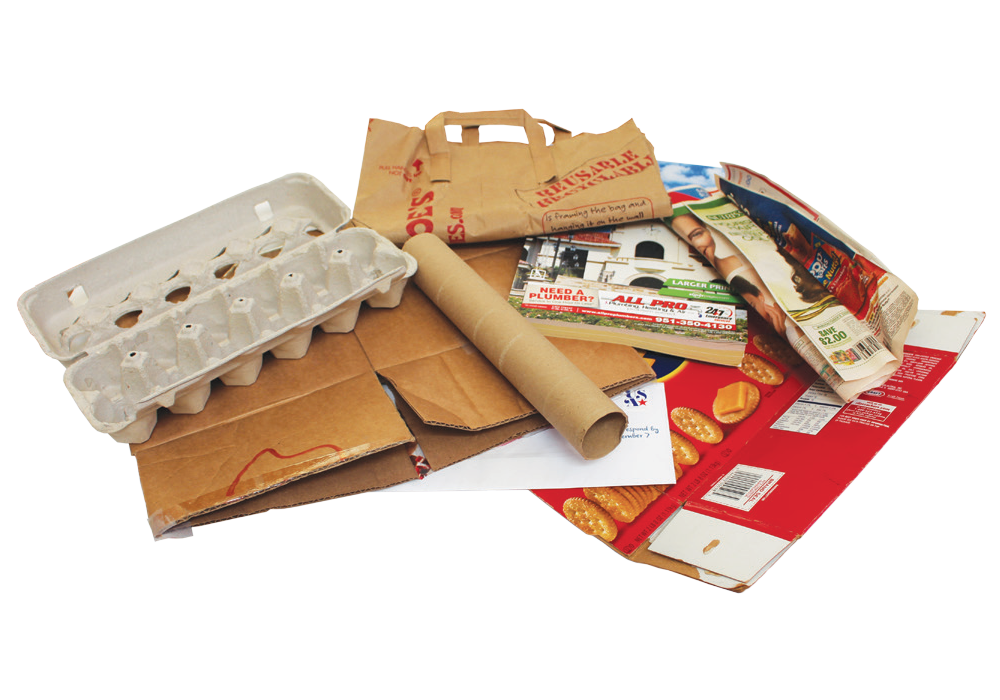
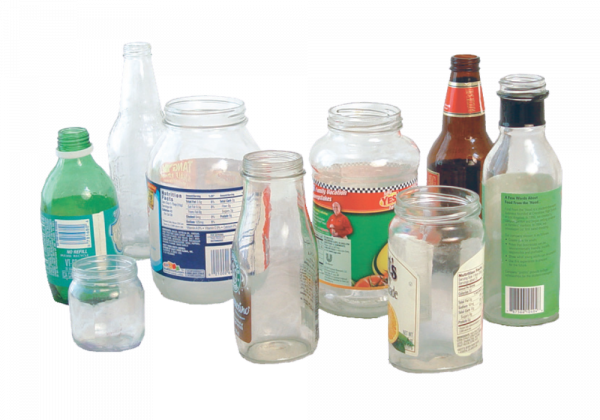
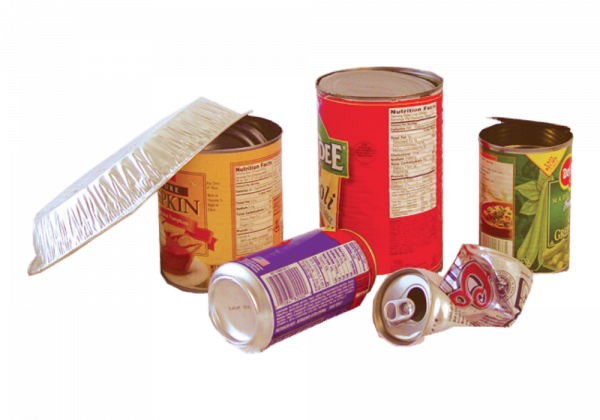
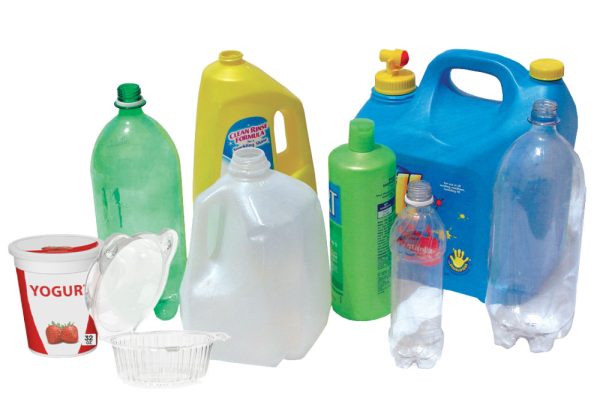
Download a handy printable flyer and post it on your refrigerator or near your recycling bins to remind everyone about what belongs there.
To see more printable posters and flyers, visit our Posters page.
Below are items that can (and should) be recycled, but are not accepted in most curbside recycling programs, therefore you will need to make special arrangements for proper recycling.
Plastic bags and plastic film wrap
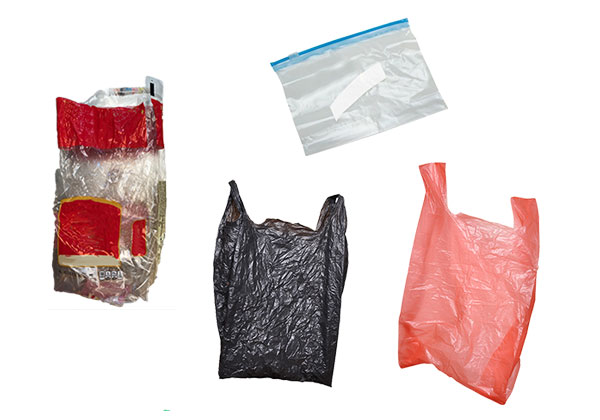 Soft, flexible plastic film packaging such as grocery, bread, zip-top and dry cleaning bags or the wrap around such products as paper plates, napkins, and bathroom tissue CAN be recycled, but not in your curbside recycling program.
Soft, flexible plastic film packaging such as grocery, bread, zip-top and dry cleaning bags or the wrap around such products as paper plates, napkins, and bathroom tissue CAN be recycled, but not in your curbside recycling program.
Plastic bags are rapidly becoming the widest-spread litter issue in America. Because of their composition and extremely light weight, plastic bags and film plastic require special handling. Most materials recovery facilities, or MRFs, aren’t equipped to handle them. When tossed in a trashcan, the bags frequently escape and are blown about by the smallest breeze. Occasionally, the bags are even blown out of trash disposal trucks.
In order to keep plastic bags from cluttering streets, clinging to the Joshua trees, and jamming up recycling equipment in the MRF, take them back to the grocery store for proper recycling by the manufacturers.
If you can’t find a store that accept plastic bags, please call 1-888-URECYCLE or use the button below to find a nearby drop off location.
In November of 2016, California voters upheld the nation’s first statewide ban on single-use plastic bags (Single-Use Carryout Bags SB 270), aligning state law with ordinances passed by a growing number of local governments in California to reduce plastic waste.
As a result, most grocery stores, retail stores with a pharmacy, convenience stores, food marts, and liquor stores are no longer able to provide single-use plastic carry-out bags. Instead, these stores may provide a reusable grocery bag or recycled paper bag to a customer at the point of sale at a charge of at least 10 cents.
California recently strengthened its stance on plastic bags by signing Senate Bill 1053 (Blakespear, 2024) which will ban all plastic bags from grocery and retail stores by 2026. Beginning January 1, 2026, stores will only be allowed to distribute recycled carryout paper bags to customers at checkout counters, self-checkout kiosks, instore pickup, curbside delivery, and home delivery for a minimum charge of ten cents ($0.10) per bag. In 2028, recycled paper bags distributed at stores will be required to contain at least 50% post consumer recycled materials.
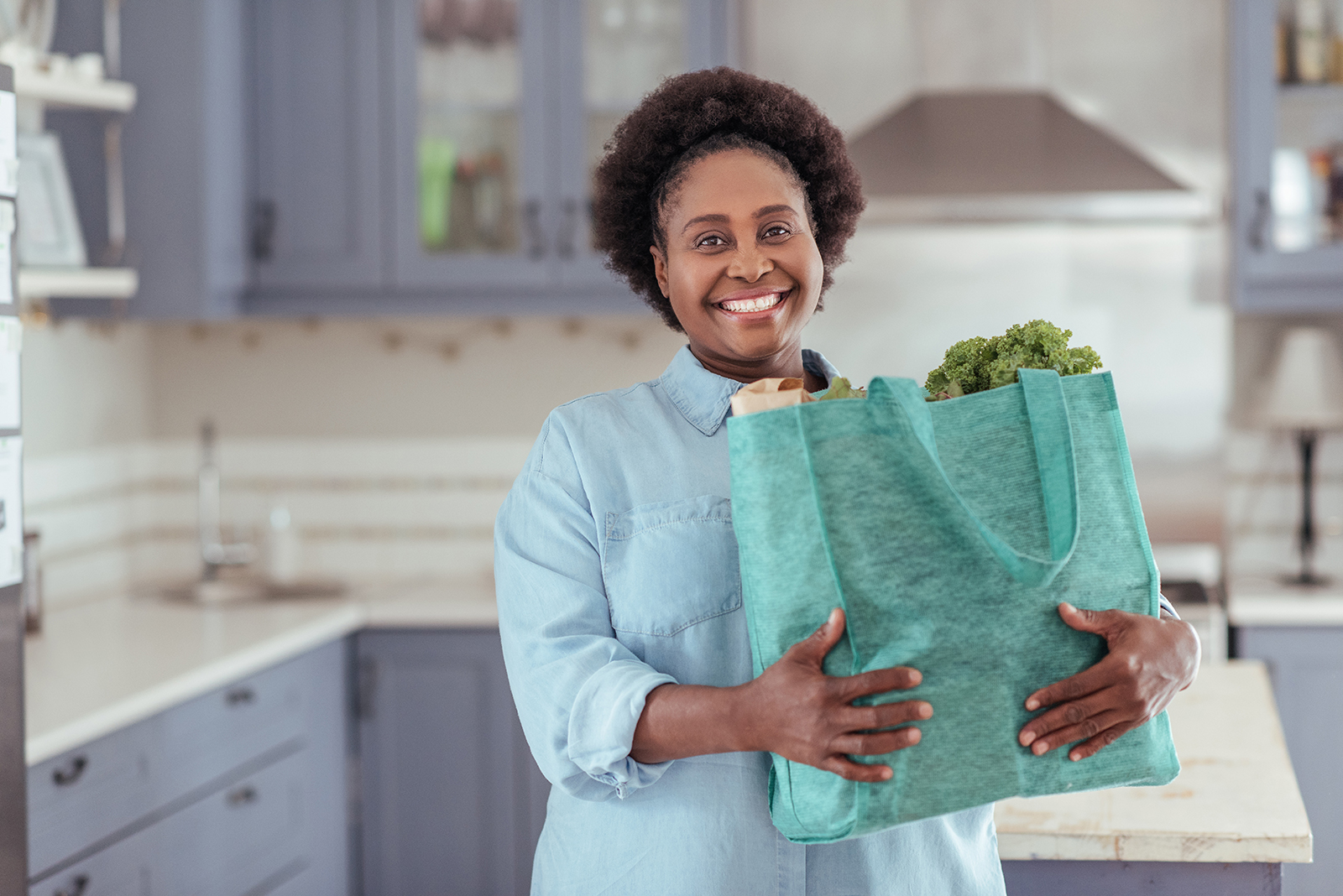
Televisions, Computers, Cell Phones and Electronics
Ask your retailer for recycling options or drop these items off at your local Household Hazardous Waste (HHW) Collection Facility or drop off location. There are 14 Household Hazardous Waste Collection Facilities throughout San Bernardino County all run by the San Bernardino County Fire Department.
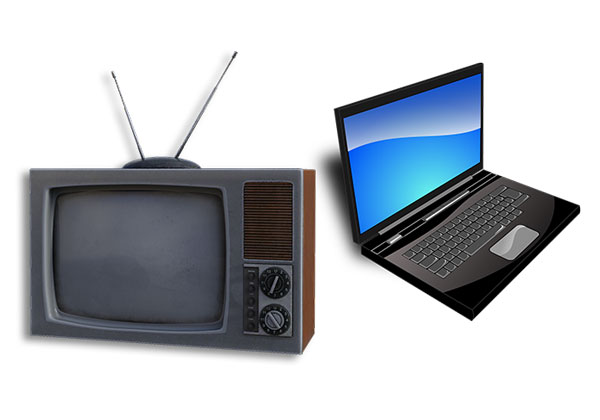
Don’t trash that mattress!
Many of the cities in our area provide municipal pickup services to remove bulky waste – including mattresses – from your home.
Follow the link below to visit the Mattress Recycling Council’s site (Bye Bye Mattress) where they provide a list of local municipal pickup providers in the High Desert area.
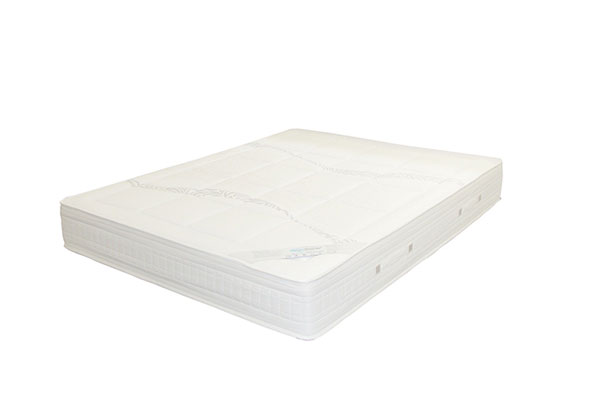
Deep fried turkey tastes great, but what do you do with all that leftover oil? Don’t put it down your drain or in your trash, instead take it to the household hazardous waste drop off facility.
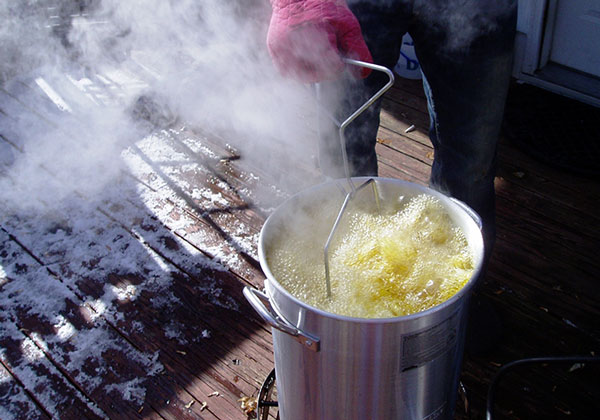
You can take your unused paint to your nearest household hazardous waste drop off facility. Most locations accept all paints, thinners, and other solvents. Be sure to call first because a few locations only accept latex paint.
California’s PaintCare program is an industry sponsored product stewardship solution to properly manage leftover consumer paint. You can bring leftover paint to one of these participating locations. Please call first to assure they have storage capacity.
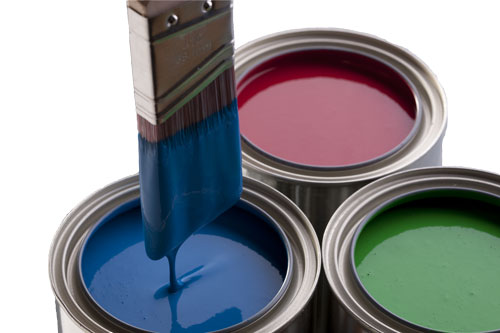
Did you know that used motor oil never wears out? It just gets dirty and can be recycled, cleaned, and used again. Recycling used motor oil conserves a natural resource (oil) and is good for the environment too!
Motor oil poured onto the ground or into storm drains, or tossed into trash cans (even in a sealed container) can contaminate and pollute the soil, groundwater, streams, and rivers. Recycling your used motor oil reduces this pollution threat.
When you take your used oil to a certified center for recycling, you are protecting the environment, conserving a valuable resource, and getting paid for it. That’s a winning combination!
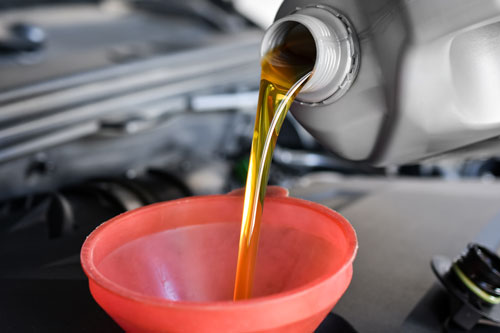
Doing some remodeling? Remember to recycle carpet and carpet padding.
The best place to start is by asking your retailer about recycling options.
You can also find drop-off locations from the Carpet America Recovery Effort (CARE) site. CARE is the manufacturers’ stewardship organization dedicated to increasing landfill diversion and recycling of post-consumer carpet.
The CARE California Drop-off Site map at the button below will help you find a place to take your old carpet to be recycled. Enter a drop-off site’s name, city or zip code, or simply zoom into your location on the map to find the best site for you.
CalRecycle has helpful information for consumers, retailers and manufacturers on their Carpet Materials Management page.
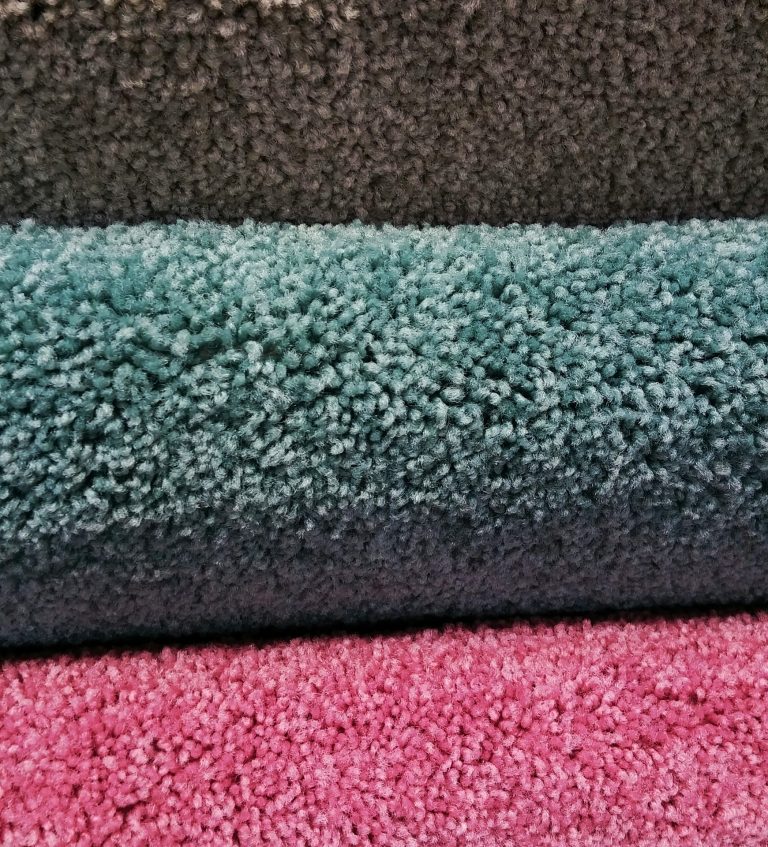
It’s extremely important that we keep our recycling streams free of contaminants (things that don’t belong there). See the “What To Recycle” for guidelines about what material belongs in recycling.
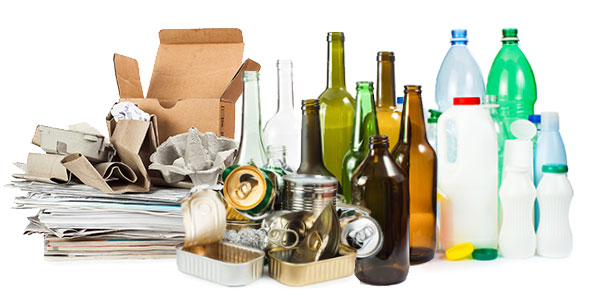
Make recycling in your household easy and convenient. Put a recycling bin in any location you might need it so it’s always on hand. Put one in your kitchen next to your trash can, one where you sort your mail, one in your office… You get the picture. Make it easy!
Your recycling bin can be a plastic basket, or box, a wicker basket or even a plain old recyclable paper bag.
When you have something to recycle, drop it into a recycling bin. When the bin gets full, empty it into your curbside recycling container or take it to the nearest community drop-off location.
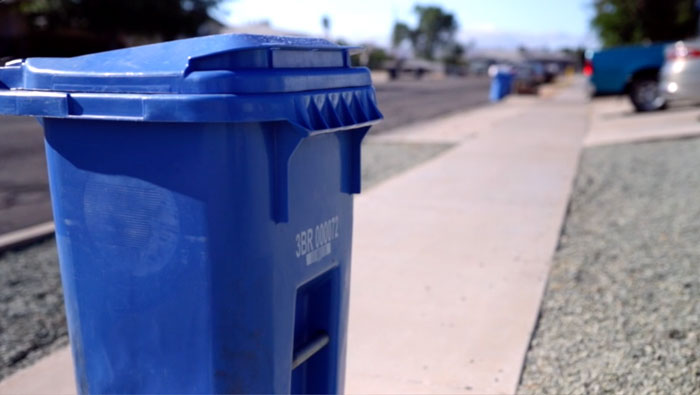
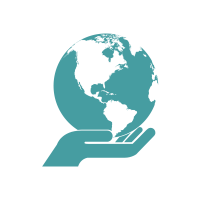
When you recycle you conserve valuable natural resources. Using recycled materials to make new products saves energy and reduces the amount of air and water emissions produced during the manufacture of new products. Recycling reduces greenhouse gas emissions compared to virgin materials production.
We live in a unique and delicate ecosystem that is continuously threatened by human impacts. Returning high-quality recycling to redemption centers reduces litter in public places and helps keep our environment healthy and beautiful.
Californian’s throw away about 5 pounds of trash per day. Proper recycling keeps valuable material out of the garbage stream and lowers the amount of waste sent to landfills. We all benefit from slowing the growth of landfills and conserving that limited space.
Recycled materials make up a significant and growing portion of our nation’s resource base. By recycling, you provide industry with the raw materials it needs to make new products. This, in turn, supports business and jobs. Recycling creates at least 10 jobs for every one created by sending the same amount to landfills.
You’ve probably heard of the classic 4 Rs—Reduce, Reuse, Recycle, and Rot—but the list doesn’t stop there. More R’s mean more ways to cut down on waste and make a positive impact. From Rethink (Do I need this?) to Repair (Can I fix it?) and Repurpose (How else can this be used?), each R is a step toward creating less waste. Consider making choices that align with these principles, like buying less, giving second life to things through repair, and passing items along by donating or reselling. Together, these steps add up to a cleaner, greener communit
Reducing is simply about creating less waste in the first place. Conscientiously purchasing less is a powerful tool in combating waste and reducing your overall environmental impact.
Before you buy, consider if you really need that new item. Could you borrow one? Could you use something you already have? Is it something you’ll be able to use for a long time? Can you repair it if it breaks? Can you resell or donate it when you no longer need it?
Keep manufacturer’s instructions on how to clean and maintain appliances, tools, and consumer electronics. User manuals may provide telephone numbers for technical assistance to help you with minor repairs.
Repair classes are offered through adult or continuing education programs on a wide range of subjects such as auto repair, bicycle maintenance and PC troubleshooting. Contact your local community colleges and adult education centers for courses offered.
Many items remain useful long after you replace or abandon them. Can you use the item for something else? Can you upcycle it?
Even if you can’t use it, consider donating or selling usable items rather than tossing them into your recycling container or trashing them in a landfill.
We love recycling! But we want to reduce the amount of material that makes it to the recycling stage.
If you’ve exhausted the three previous options, then recycling is your best choice. Just make sure that the item you’re considering is made of recyclable materials. You may need to break it apart to separate the recyclable material.
Recycling is circular. A material is manufactured into a product which goes to a store, where you buy it. You use the product — and hopefully reuse it— then put it in your recycling cart. From there it is collected and taking to a processing plant where it turned back into base materials which a manufacturer uses to create something new. And the cycle starts again.
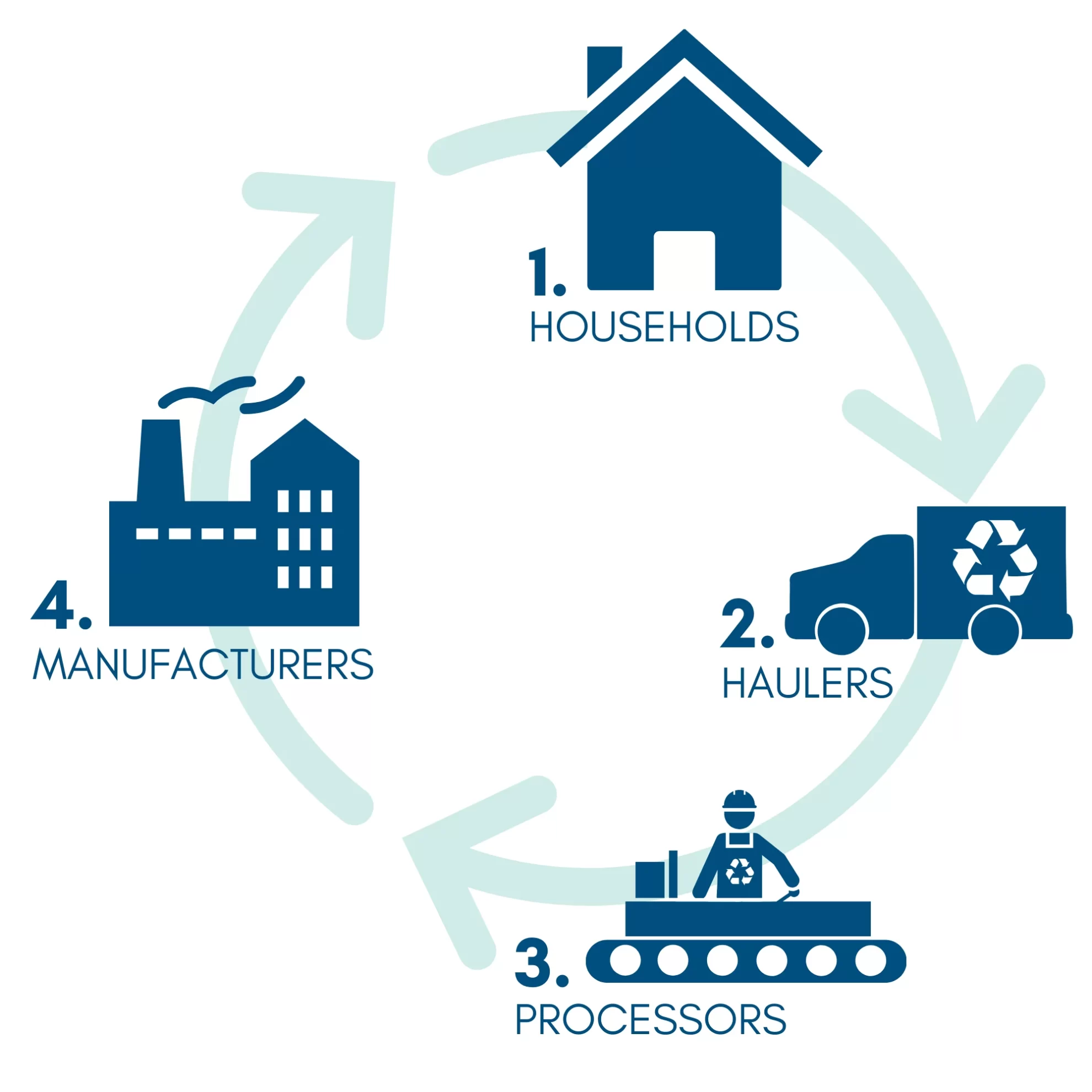
The MRF (pronounced “mirf”) is an intermediate processing center— sorting mixed recyclables into separate categories: newspaper, cardboard, other mixed papers, glass, steel cans, aluminum cans, PET plastics, HDPE plastics, and more. Once the recyclables are sorted (and compacted into bales), they are then ready to be shipped to businesses to be made into new products.
Most communities in the High Desert and Mountain area are served by the Victor Valley Materials Recovery Facility (MRF)
The MRF is the “middleman” between residents who separate recyclables, and the industries which use recyclable materials to make new products.
The MRF is owned by the Town of Apple Valley and City of Victorville; administered by the Mojave Desert and Mountain Recycling Authority; and operated by Burrtec Waste Industries.
17000 Abbey Lane, Victorville, CA
Hours:
Monday – Friday 8am – 4pm
Saturdays 8am – 12pm
Phone: (760) 241-1284
This guide introduces you to the MRF and how recycling materials are processed at the facility.
Recycle Alley is a community drop-off site open to all residents and businesses of the High Desert.
Visit Recycle Alley before you go to the landfill!
Recycle Alley is a community drop-off site at the Victor Valley Materials Recovery Facility. You can bring clothes, plastic bags, electronics and scrap metal as well as traditional recyclables (bottles and cans, paper, rigid plastic). Check out the buy-back pricing for bottles and cans, newspaper and cardboard.
By recycling these items at the MRF, residents and businesses reduce the amount of trash going to the landfill. This helps reduce landfill disposal costs and saves valuable resources.
Call for current pricing.
(760) 241-1284
*Indicates buy-back redeemable item
** Free to residents—fees apply for businesses
17000 Abbey Lane in Victorville
Just off Stoddard Wells Road heading north toward the Landfill.
Hours: Monday – Friday, 8am – 4pm
Phone: (760) 241-1284
Web: www.VictorvilleRecycles.com
You pay a deposit every time you purchase eligible beverage containers, don’t you want that back?
Every time you purchase an eligible beverage container from a retailer in California, you pay a nickel, dime or quarter deposit on that container. The California Redemption Value, or CRV, is the deposit return system that allows you to return those empty beverage containers to a recycling location to get back the deposit you paid.
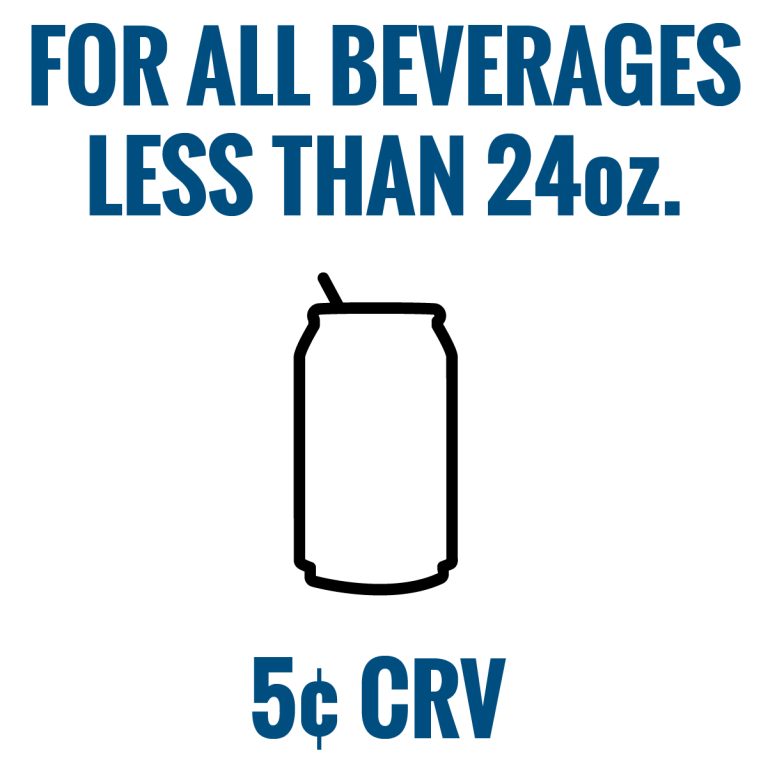
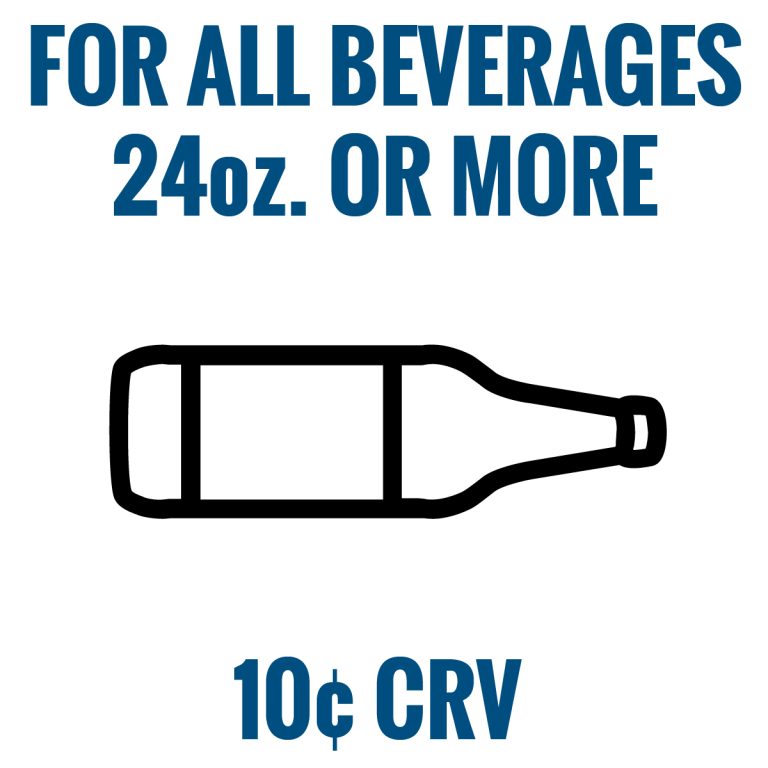
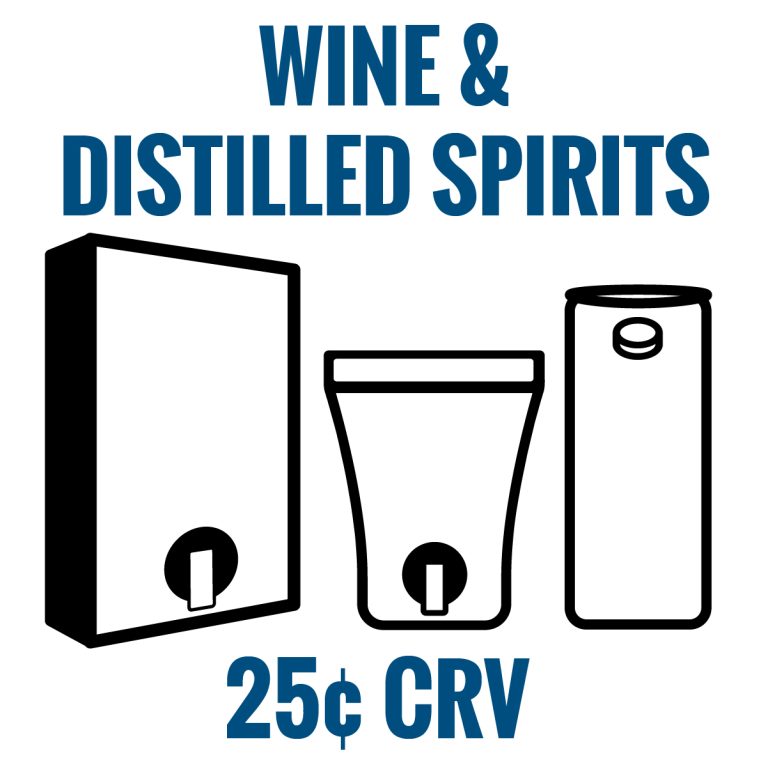
Glass, aluminum, bimetal and plastic containers including:
If you have less than 50 containers of one type, your refund will be a nickel, dime, or quarter (depending on size and type) for each container. If you bring more than 50 containers of a particular type, your containers are weighed and converted for refund value.
You may bring up to 100 pounds of aluminum and plastic or 1,000 pounds of glass on a single visit to a Recycling Center.
Victor Valley residents can drop off CRV materials at the Victor Valley Recycling Drop-Off & Buy Back Center, open Monday to Friday from 8 a.m. to 4 p.m at 17000 Abbey Lane, Victorville. Call (760) 241-1284 for more info.
You can also visit the CalRecycle website to find a map showing over 1,200 Beverage Container Recycling Centers in California.
If you can’t find a nearby Recycling Center, try searching for retailers that redeem in-store. Thousands of grocery stores and other retailers statewide have pledged to accept empty beverage containers and provide deposit refunds. If your store is not included ask about their plans to redeem containers. Some stores have elected to pay a $100 daily fee to become exempt.
What if there isn’t a recycling redemption center near me?
Let’s close the loop and put our purchasing power to work!
If you are sending your waste to be recycled, but you are not looking for recycled content in the products that you buy, then, in theory, you are not completing a cycle, and are not truly recycling.
CalRecycle provides the following directories that can help you source recycled content products:
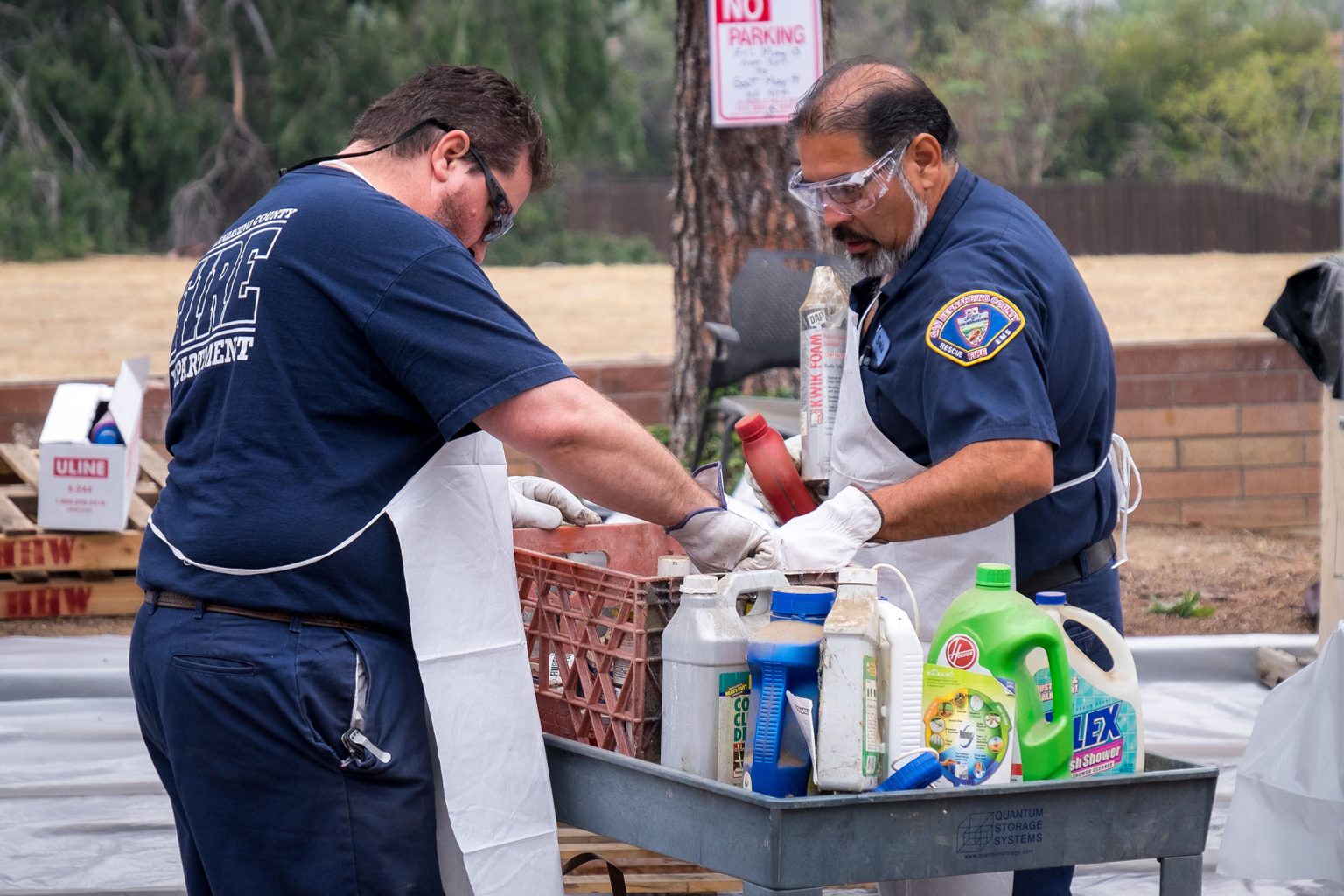
Household hazardous waste (HHW) is any chemical-based material discarded from homes which may threaten human health or the environment when disposed of improperly.
You might be surprised at the number of items in your house that are considered hazardous waste and require special disposal. It is important for the health and safety of our community that the items listed below are disposed of properly at a hazardous waste collection facility.
San Bernardino County residents may use any of the collection facilities in the areas listed below.
The Household Hazardous Waste Collection Facilities in San Bernardino County are run by the San Bernardino County Fire Department.
Call 909.382.5401 or 1.800.OILY.CAT (645.9228) to verify operating hours prior to visiting a collection center.
Collection Facilities that only accept antifreeze, batteries, oil and oil filters, and (Latex) paint are called ABOP facilities and are noted as such.
THE TOWN OF APPLE VALLEY HHW FACILITY
13450 Nomwaket Road, Apple Valley, CA 92308
Sat, 10–2
Also accepts e-waste & sharps
CITY OF BARSTOW CORPORATION YARD
900 South Avenue H, Barstow, CA 92311
Sat, 9–2
Also accepts sharps
No e-waste
PUBLIC SERVICE YARD
42040 Garstin Drive, Big Bear Lake, CA 92315
Sat, 9–2
Also accepts sharps
COUNTY FIRE STATION 17
150260 Capistrano Way
Call to verify, 909.382.5401
1st Saturday of the month, 8-12
ABOP facilities accept the following household items only:
CHINO CITY PUBLIC WORKS SERVICES CENTER
5050 Schaefer Avenue, Chino, CA 91710
2nd & 4th Sat, 8–1
Also accepts e-waste
No sharps
County Fire Station 18
148808 Havasu Lake Rd.
1st Saturday of the month, 8-12
ABOP facilities accept the following household items only:
HOUSEHOLD HAZARDOUS WASTE FACILITY
17443 Lemon St., Hesperia, CA 92345
Tue – Closed
Thur – 9am-1pm
Sat – 9am-2pm
Also accepts e-waste & sharps
WEST OF TRANSPORTATION / FLOOD CONTROL BUILDING
62499 29 Palms Hwy, Joshua Tree, CA 92252
3rd Saturday, 9–1
Also accepts sharps
No e-waste
Behind Fire Station 8
33269 Old Woman Springs Rd.
Call to verify, 909.382.5401
3rd Saturday of the month, 9-12
ABOP facilities accept the following household items only:
NEEDLES CITY YARD
112 Robuffa Street, Needles, CA 92363
call 1.800.OILY.CAT (645.9228) to verify dates and hours
Also accepts e-waste & sharps
HOUSEHOLD HAZARDOUS WASTE COLLECTION CENTER
1430 S. Cucamonga Ave, Ontario, CA 91761
Fri & Sat, 9–2
Also accepts e-waste & sharps
HOUSEHOLD HAZARDOUS WASTE FACILITY
8794 Lion St, Rancho Cucamonga, CA 91730
Sat, 8–12
Also accepts e-waste
No sharps
REDLANDS CITY YARD
500 Kansas St at Park Ave, Redlands, CA 92374
Sat, 9-2
Also accepts e-waste & sharps
CITY MAINTENANCE YARD
246 South Willow Avenue, Rialto, CA 92376
2nd & 4th Fri & Sat, 8–12
Also accepts sharps
No e-waste
S.B. INTERNATIONAL AIRPORT
2824 East “W” Street, Bldg. 302,
San Bernardino, CA 92408
Website: https://www.sbcfire.org
Mon–Fri, 9–4
Also accepts e-waste & sharps
COUNTY FIRE STATION 127
83732 Trona Road, Trona, CA 93562
2nd Sat in Mar, Jun, and Dec, 8–12 (call for Sept)
Also accepts e-waste & sharps
COUNTY FIRE STATION
1370 North Benson, Upland, CA 91786
Sat 7:30am-12:30pm
Also accepts e-waste and sharps
SAN BERNARDINO COUNTY FAIRGROUNDS
14889 Loves Lane, Victorville, CA 92392
Wed & Sun, 9–4
Also accepts e-waste & sharps
Follow these four steps to protect you and your family’s health and environment.
Always dispose of leftover hazardous products properly at a San Bernardino County Household Hazardous Waste Collection site in your community.
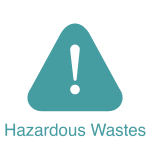
By law, hazardous products must have warning labels. There is a hierarchy to the labels that relates to their level of hazard.
Choose products that don’t require a warning label or those marked Caution or Warning.
Pesticides are poisons. Besides killing bugs and weeds, they may also poison children and pets, irritate eyes or skin, cause skin cancer, or kill birds and fish.
Use less-toxic cleaners!
Some cleaners contain very hazardous ingredients that can burn your eyes, skin or lungs.
Look for safer, name-brand substitutes at your grocery store, or use simple alternatives. Some such non-toxic alternative manufacturers are the Sun & Earth Company, Seventh Generation, Ecover, and Simple Green.
Here’s an idea: try making your own All-Purpose Cleaner. It’s easy to do with products you may already have, and it works. Mix 1/2 cup vinegar and 1/4 cup baking soda into 1/2 gallon (2 liters) of water.
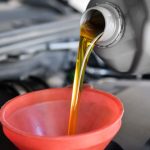
Take your oil to a San Bernardino County Household Hazardous Waste Collection site, or a certified collection center in your neighborhood.
For a location nearest you, contact 1-800-OILY CAT (645-9228).